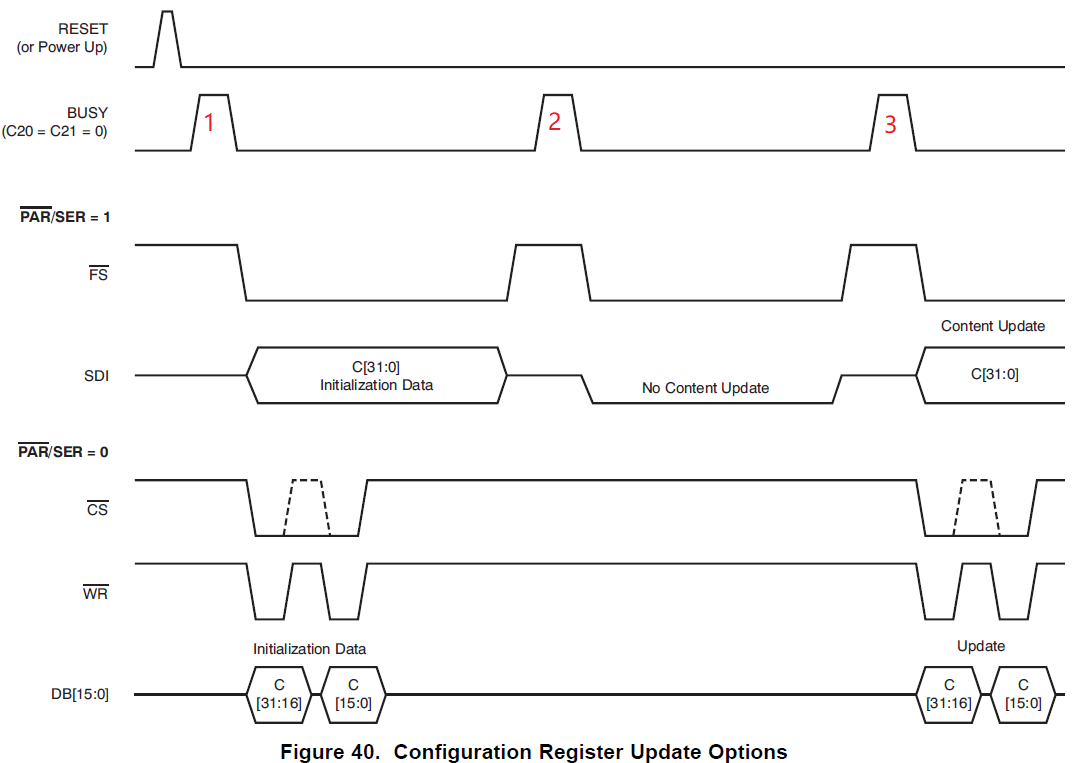Hello Team,
we are developing a new electronics where we will use the ADS8528. We would like to use the following modes:
- Normal mode (ASLEEP connected to GND)
- CONVST_A ... CONVST_D will be used to start the conversion
(CONVST_A ... CONVST_D are connected together and to nCS/nFS; to start a conversion the signal is pulled low by a GPO of a uC; +10 k Pull-Up to AVDD)
- Software mode (nHW/SW connected to AVDD)
- Interface mode: Parallel (nPAR/SER connected to AGND)
- No external clock (RANGE/XCLK have 1k pull down resistor)
- No external reference voltage (No external reference voltage at REFIO)
- external RESET-Signal (no pull-down at the RESET-Pin, the RESET-Signal will come from the GPO of a uC.
What we would like to have is:
- Normal operation with internal conversion clock
- Input voltage range for all 4 channels: 4 VREF
- Internal reference enabled
- Internal reference buffers enabled
- Internal reference voltage set to 2.5 V
We wrote A1A8C0FF to the Configuration Register but we measure 1.04 V at the REFIO-Pin and not 2.5 V as expected.
With this 1.04 V the ADC seems to work (for testing we supplied different voltages to the ADC inputs).
If we wrote E1A8C0FF (means WRITE_EN and READ_EN both high) we get 2.5 V at REFIO but the ADC do not work anymore.
Is our Configuration register setting correctly?
Do we need to have a pull-down at the RESET-Pin?
Best regards
Christian Zellner


